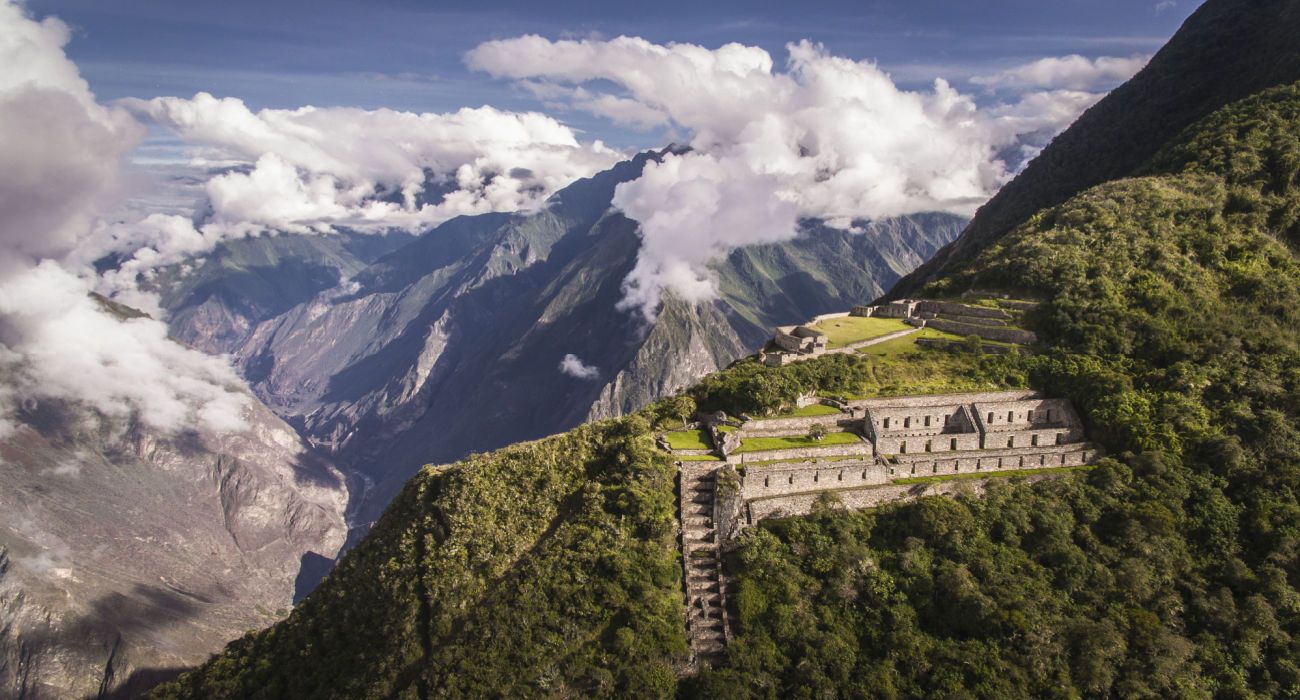Quick Links
Machu Picchu wasn't the only remote alpine retreat the Inca built high in the Peruvian Andes. Hidden away in the mountains is also the little-known Inca site called Choquequirao. Whereas Machu Picchu is immensely popular and draws visitors from all around the world, Choquequirao only receives a few dozen visitors every day. The architecture and design of Choquequirao are similar to that of Machu Picchu.
While people are enthralled by the mystic, setting, and incredible history of Machu Picchu, Choquequirao flies under the radar. Another of Peru's Machu Picchu-like attractions is the Rupac. Rupac is often known as the “Machu Picchu of Lima" and "the City of Fire" and is also rarely visited.
What To Know Of Choquequirao - The Remote Retreat For The Inca Elite
Choquequirao is believed to have been at least three times larger than Machu Picchu and was likely built around 1445 as a rural retreat for the Inca elite. The whole site takes up around 1,800 hectares, but only 30-40% has been excavated.
The name means "Cradle of Gold," and it was full of beauty and grandeur (that evoke comparisons with Machu Picchu). Its architecture and structure are similar to that of Machu Picchu.
Choquequirao is a stunning location with terraces ringing the truncated hilltop. Around is dense jungle and majestic glacial peaks on the Vilcabamba range. The hilltop was leveled and ringed with stones in ancient times, creating a 30 meters by 50 meters platform.
- Elevation: 3,050 Meters or 10,010 Feet
The site once boasted temples, huacas, elite residences, bath systems, and other structures. Fortunately, most of the buildings of the ceremonial center are well-preserved and well-restored.
A Refuge For The Crumping Inca & Lost To History
As the Inca Empire crumbled with the arrival of the Spanish, the Incas of the Vilcabamba valley sought refuge at Choquequirao. It was one of the last bastions of resistance and refuge for the Inca as the Spanish took over the empire. It was lost for many years, the first non-Incan visitor may have been the explorer Juan Arias Diaz in 1710, but it was written about until 1768.
Choquequirao may have also served as an entrance checkpoint to the city of Vilcabamba. Vilcabamba became the Inca capital after the fall of Cusco and was a lost city for many years. Choquequirao was also an important link between the Amazon Jungle and the city of Cusco.
Choquequirao was built in two major growth states. It is one of many sites in the area with similar architectural styles (others include Sayhuite, Machu Picchu, Chachabama, Choquesuysuy, and Guamanmarca).
How To Get To Choquequirao
Choquequirao is difficult to reach. First, there is a four-hour-long drive from the old Inca capital of Cusco (which also has plenty to see and explore) to the trailhead at Abancay. Then it is an arduous two-day hike to the site making the out-and-back trek take 4 or 5 days of walking. Most treks take 7 to 11 eleven days and involved going over the Yanama Pass (which rises to 4,668 meters or 15,300 feet). It is necessary to camp along the way.
- Hiking: 2 Days One Way
While the long hike along ancient Inca roads to Machu Picchu seems to be one of the draws of visiting the site, the long hike to Choquequirao seems to discourage visitors.
Choquequirao has been compared to the experience of visiting Chichen Itza before the copious amounts of tour buses started to arrive.
The long hike is the only way to Choquequirao. It is also possible to continue hiking to Machu Picchu from Choquequirao.
Future Cable Car To Choquequirao
Peru is considering building a cable car to Choquequirao. This would eliminate the taxing multi-day hike to just a quick 15-minute cable car ride.
It is hoped that the Choquequirao cable car would bring some 200,000 tourists in the first year at the site. The cable car would be 5.4 kilometers long and carry up to 400 people per hour. This project was touted in 2013, and it seems that construction has not started. If it is ever completed, it is certain that Choquequirao will cease to be the lost and forgotten sister site to Machu Picchu that it is today.

